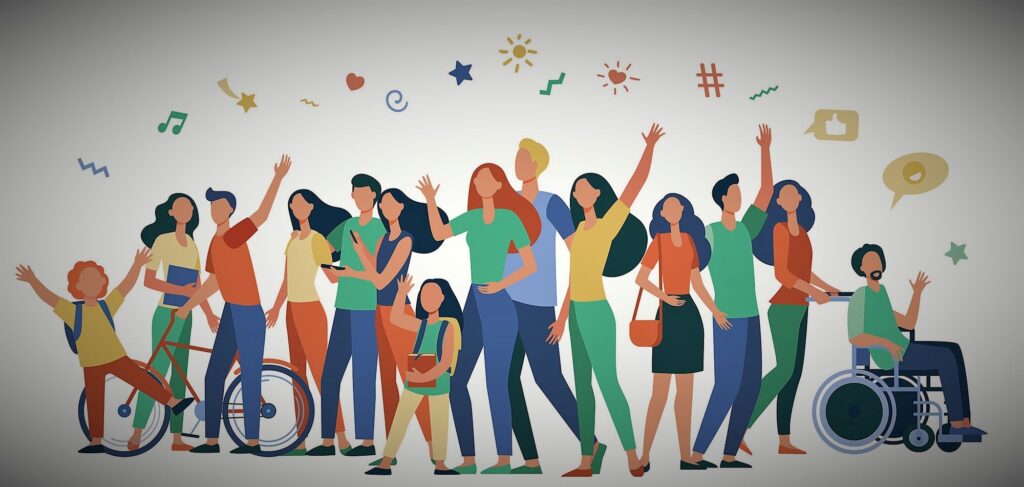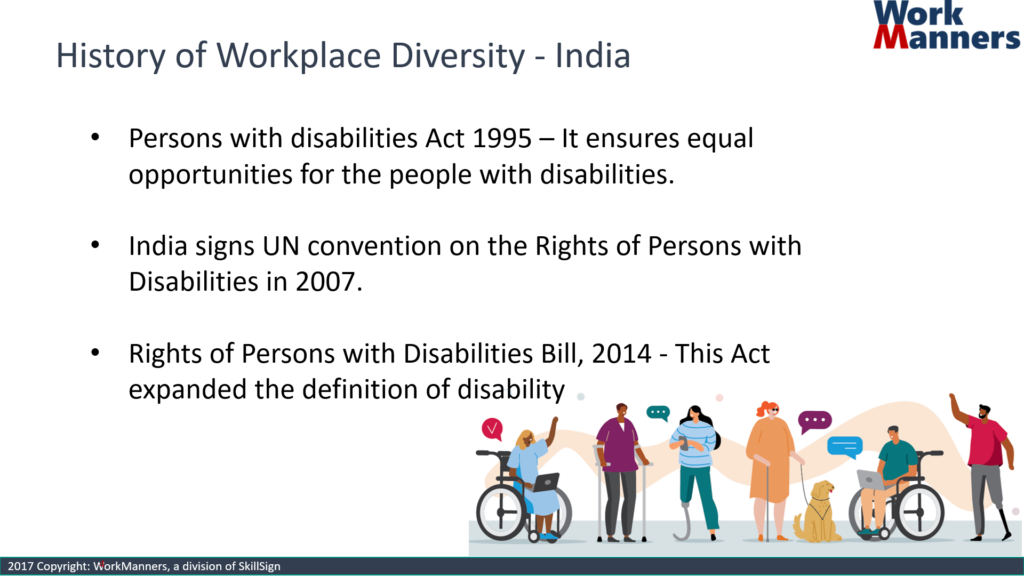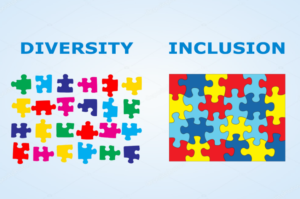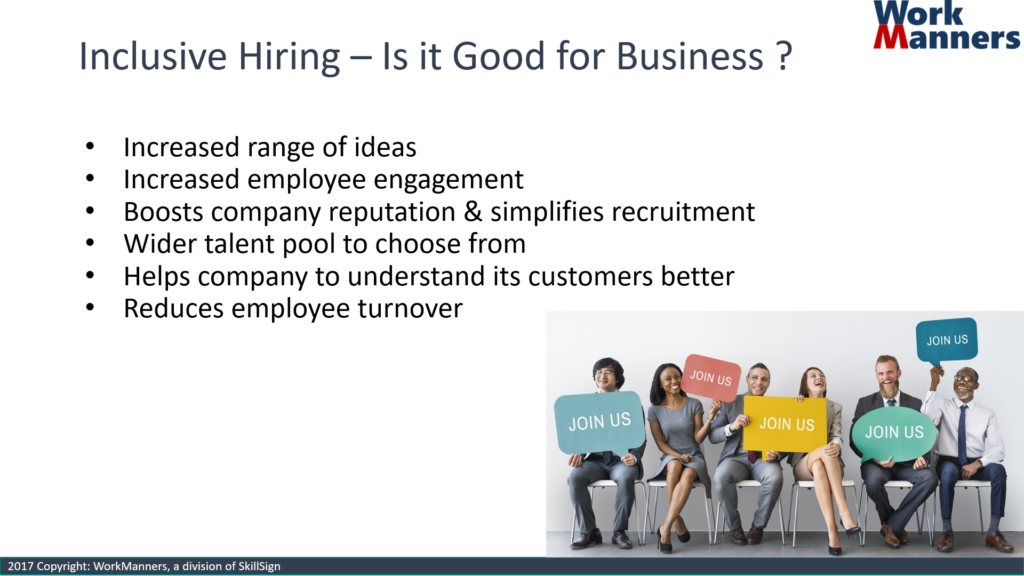
Your organization’s long-term success depends on its ability to engage and retain diverse teams. This course is about becoming familiar with diversity and inclusion issues in the workplace. The course will help you appreciate the challenges as well as benefits of building and working in inclusive work culture.
This online resource aims to:
- Broaden the concept of diversity and inclusion
- Challenge some of the stereotypes associated with LGBTQ+ persons
- Suggest concrete means for improving employee well-being at work
- Offer basic information on the individual rights and obligations of all employees in a workplace that respects diversity and embraces inclusion.
Duration – 60 minutes
Introduction
Diversity and inclusion in the workplace is no longer just a trend but is now considered a business imperative for global organizations. Recent research confirms the strong business case for diversity in corporate workforce. The most diverse companies are now more likely than ever to outperform less diverse peers on profitability.
Diversity and inclusion are two related, but not interchangeable, concepts. Diversity is about diverse representation in an organization. Inclusion is about how well the contributions and perspectives of diverse groups of people are valued and integrated into the corporate environment.
To bring out the best in everyone, we need an inclusive environment.
Diversity is not about ticking boxes and making sure we recruit candidates based on their identities, backgrounds or gender. Similarly, inclusion is not about just giving an employee the chance to feedback during an annual survey. Diversity & Inclusion is so much more than this and when clearly understood and implemented, it can offer real value to organizations.
Evolution of Diversity & Inclusion Initiatives
Diversity initiatives just a generation ago looked very different from those we have today. During the Second World War, many women entered employment to help cover the major workforce shortages due to men carrying out their military service. But the following decades saw women’s opportunities for employment severely curtailed.
In 1948, US President Truman officially desegregated the armed forces with Executive Order 9981, which made discrimination based on “race, color, religion or natural origin” illegal for all members of the armed services.
The Civil Rights Act of 1964 further dealt a crucial blow to discrimination in the workforce by making it illegal for any business, private or public, to practice discriminatory hiring (and firing) practices.
By the turn of the century, women’s participation in the US, as well as in the rest of the world, workforce increased significantly. Women also started entering industries that were until this point dominated by men.
However, despite this focus on gender diversity throughout the decade, women remained underrepresented at the board level.
Employers were quick to realize that cultural diversity in the workplace brought significant benefits. Gradually the definition of diversity expanded to include age, sexual orientation, disability and cultural differences.
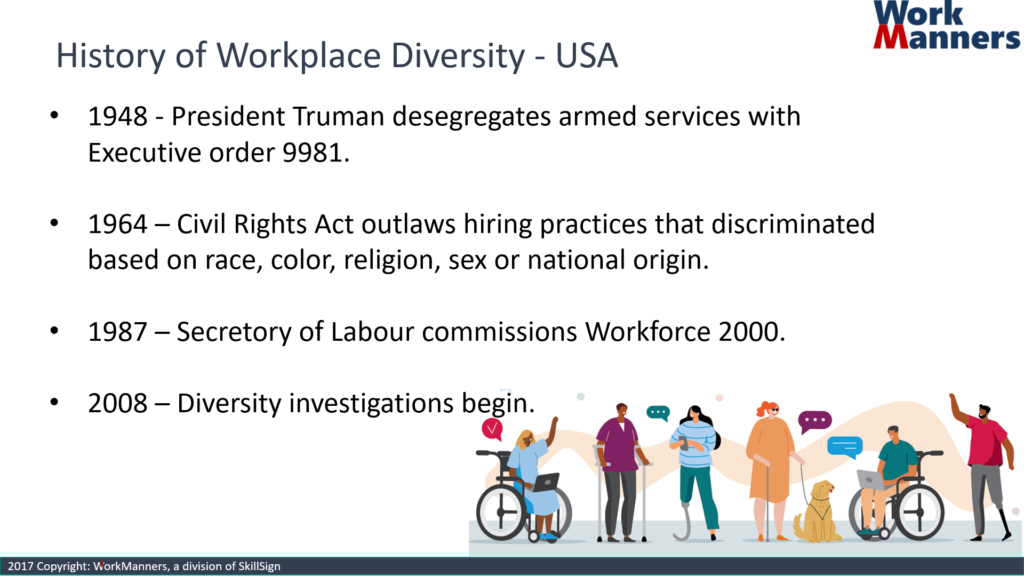
History of diversity at workplace in India
Indian society has a long tradition of accepting & respecting people with disabilities. However, legislation on diversity and inclusion at the workplace took time to evolve.
The Persons with Disabilities (Equal Opportunities, Protection of Rights and Full Participation) Act, 1995 came into force on February 7, 1996. It ensured equal opportunities for people with disabilities.
India also signed and ratified the United Nations’ Convention on the Rights of Persons with Disabilities in 2007.
In 2012, the Union Government of India came up with a disability bill, and after some amendments in the original draft. The Act became operational on 19 April 2017. This Act expanded the definition of disability by 21 types of disability against the 3 in the PWD Act 1995.
Corporate India is beginning to accept the need for diversity in the workforce and workplaces are becoming increasingly inclusive.
Diversity and Inclusion
Diversity and inclusion are two interconnected concepts—but they are far from interchangeable. Diversity is about the representation or the make-up of an entity. Inclusion is about how well the contributions, presence, and perspectives of different groups of people are valued and integrated into an environment.
A work environment where many different genders, races, nationalities, and sexual orientations and identities are present but only the perspectives of certain groups are valued or carry any authority or influence, may be diverse, but it is not inclusive.
What is diversity & inclusion in the workplace?
A diverse and inclusive workplace is one that makes everyone, regardless of who they are or what they do for the business, feel equally involved in and supported in all domains of the workplace.
Organizations need to remain competitive in a dynamic business environment due to globalization, evolving markets, and the development of new technologies. A diverse and inclusive organization can introduce different perspectives and new ideas faster and with less friction.
“Diversity is being Invited to the Party: Inclusion is being Asked to Dance”
Why is Inclusive hiring good for the business?
- Increased range of ideas
Diversity and Inclusion in the workplace often result in a much broader spectrum of creativity from people with different backgrounds, skills, and experiences.
- Increased employee engagement
A more engaged team often yields better team performance; making it a win-win for individuals and employers.
- Boosts company reputation
Diversity in the workplace helps in building a great reputation for the company; especially important when you are looking to hire and retain talent.
- Wider talent pool
Organizations are limiting themselves by not including, women, LGBTQ+, and differently-abled people by missing out on a large pool of talent.
- Helps you to understand your customers better
Having a more diverse team will help your company gain a broader understanding of your customers, what they want and what they look for.
- Reduce employee turnover
Companies with a diverse workforce will tend to retain employees for longer because employees who feel accepted and valued are much less likely to leave.

